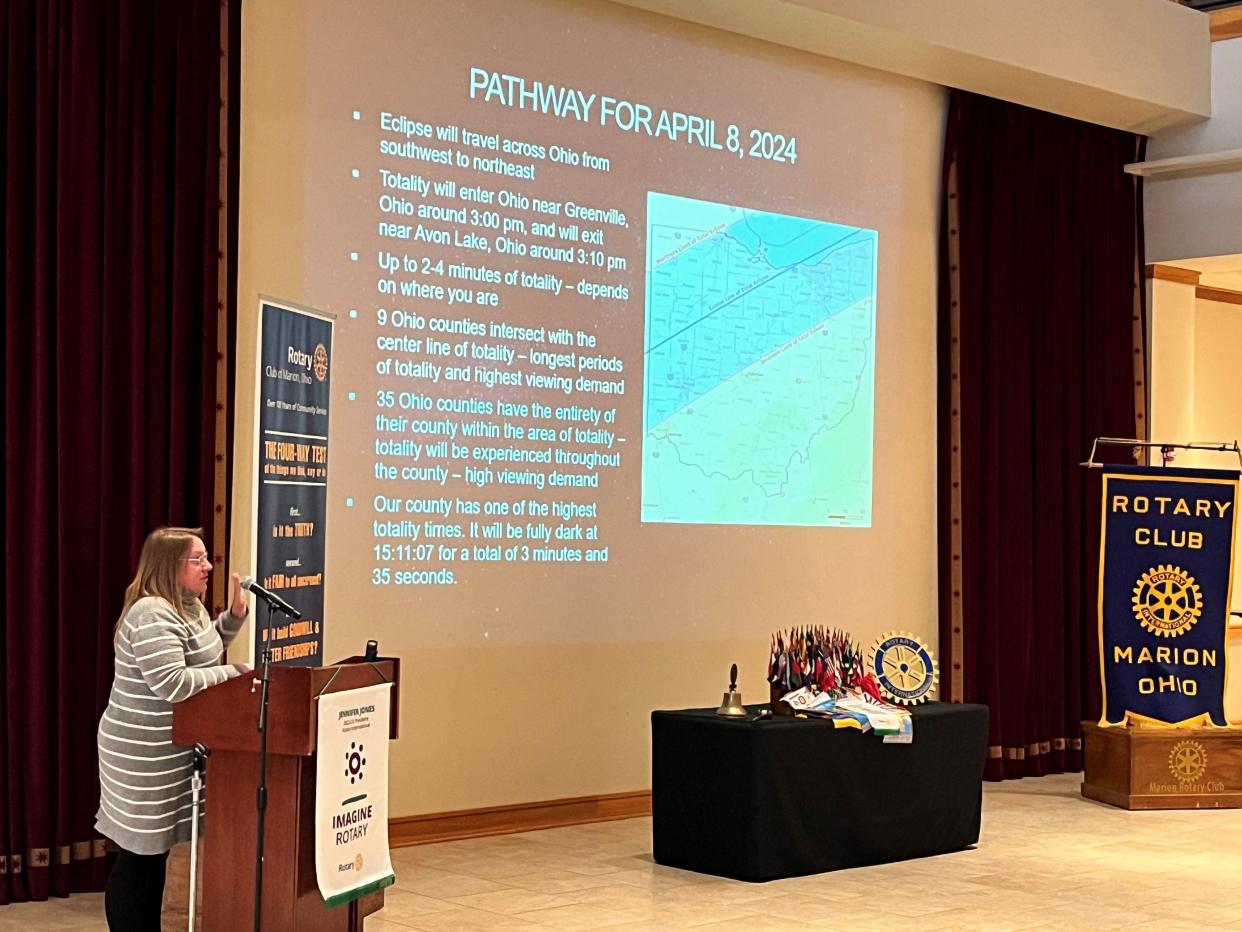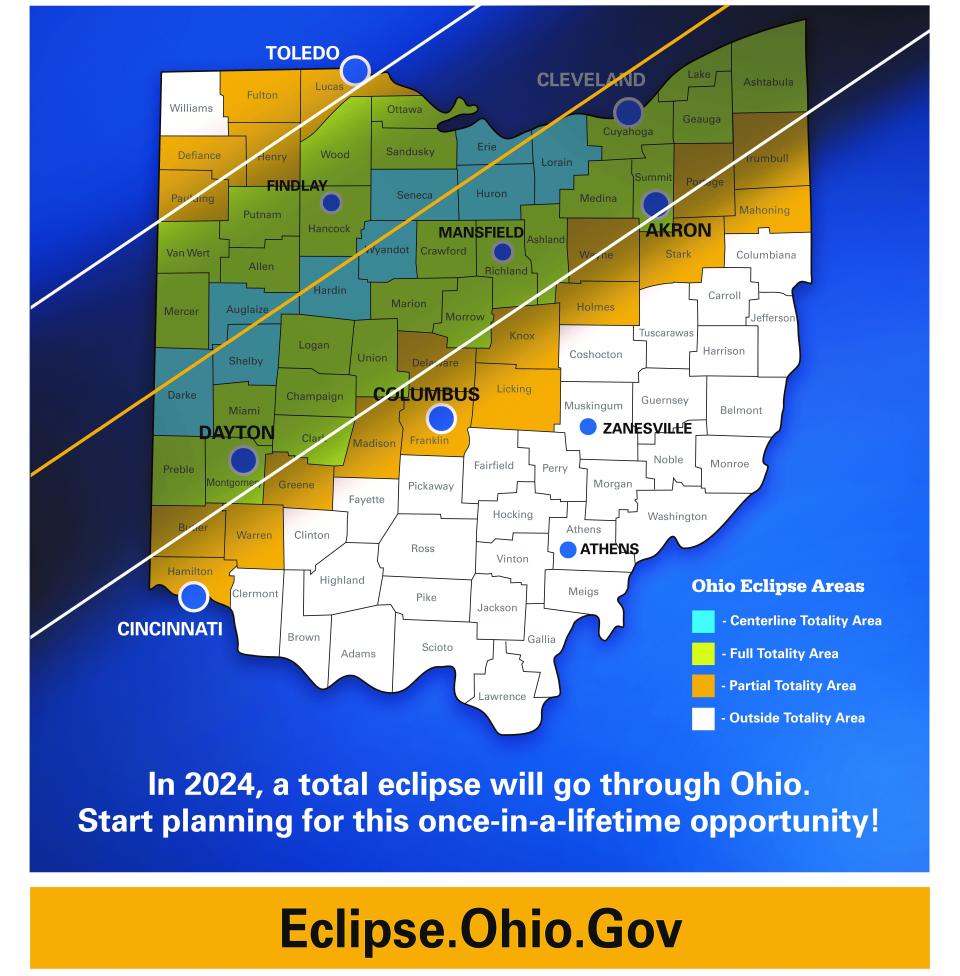Marion County officials prep for 'population surge' from 2024 eclipse

Marion is one of 35 Ohio counties that will experience the "full totality" of the total solar eclipse that will occur on April 8, 2024.
Marion County Emergency Management Agency (EMA) Director Sarah McNamee said she has been working with state and local officials and fellow EMA directors to develop a plan to handle what's expected to be a massive influx of visitors to the region next year. She gave an update on her work to the Marion Rotary Club on Tuesday.
Neighboring Hardin and Wyandot counties are right on the "centerline totality area" of the solar eclipse. Other Ohio counties located along that centerline are Darke, Shelby, Auglaize, Seneca, Huron, Erie, and Lorain. The eclipse will cross into Ohio around 1:52 p.m. near Greenville in Darke County on April 8, 2024, with totality beginning around 3:08 p.m.
Its exit point will be near Avon Lake in Lorain County around 4:30 p.m. Totality is expected to end at 3:19 p.m.
Marion County will experience one of the highest totality times with 3 minutes and 35 seconds of total darkness beginning at 3:11 p.m. on April 8, 2024.
A total of 55 counties in Ohio will experience at least a partial view of the eclipse.

McNamee said officials from NASA have said that they plan to set up a base in Forest in Hardin County to view the eclipse. It's right along the centerline of totality for the eclipse.
"(NASA) wants the most time to run the experiments they want to do, which puts (Marion County) right in the middle of all of that," McNamee said. "Because we're in the full totality area, no matter where you are in Marion County, that eclipse is going to be visible. So we're expecting to have a lot of people come here to view it."
A "population surge" is expected to affect Marion County in the days leading up to the eclipse and even in the days following it, McNamee said. That surge will place a temporary strain on local hotels, grocery stores, cellular service, law enforcement, and emergency services, which is why she and other EMA officials have started talks now to address any and all potential issues that could arise during that time next year.
McNamee said she's been in contact with officials in Madras, Oregon, and Warren County, Kentucky, two communities that experience a large influx of visitors during the 2017 solar eclipse. Madras, located in Jefferson County in north central Oregon, was the number one location for viewing the eclipse six years ago and saw more than 100,000 visitors move in temporarily to experience the phenomenon, McNamee said.
Her counterparts in Warren County, Kentucky, said about 45,000 people visited their community to see the eclipse.
While the eclipse and a large influx of visitors could be stressful, it could also be a great opportunity to showcase Marion County as a destination for tourism, McNamee said.
The last total solar eclipse in Ohio occurred in 1806, McNamee said. Fifteen visible solar eclipses have been viewed over North America since 1867. The last total solar eclipse in 2017 was only partially visible in Ohio. The next total eclipse that will be visible in Ohio will occur in 2444.
For information about the 2024 total solar eclipse, go to the Ohio EMA website eclipse.ohio.gov.
Email: ecarter@gannett.com | Twitter: @AndrewACCarter
This article originally appeared on Marion Star: Marion Co. officials preparing for total solar eclipse in April 2024

